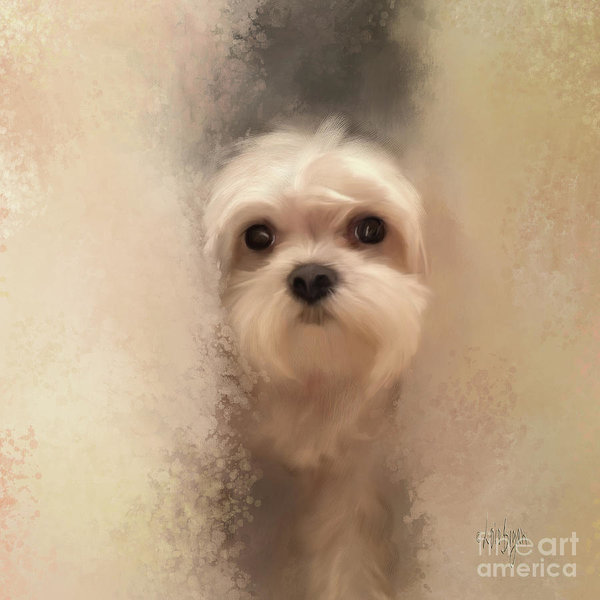
Unless one is a professional groomer, or owns and grooms different breeds, it’s hard to relate to the challenges that difference coat types pose. We, ourselves, are Puli owners, but it’s possible that we wouldn’t correctly groom a Bergamasco coat without some instruction because a Puli coat is corded, but a Bergamasco coat is flocked, and there’s a difference.
A Maltese would be especially challenging to someone accustomed to grooming only with fingers and hands, not a brush, but a Maltese is a brush breed, and the most important time to brush this breed is right after a bath when the dog is freshly damp after a toweling. Using a pin brush and metal comb with long teeth widely spaced at one end, the dog’s head and feet are brushed and combed, and then it’s onto the body, legs, neck and tail.
It’s not enough to comb and brush a Maltese, one has to think about what they’re doing: One should never brush a dry coat in this breed. Stretching or breaking the hair results in hair that becomes dull, frizzy, and pull-damaged to the point that even anti-static spray won’t help manage it. Every owner, we suspect, grooms a little differently, but when watching one Maltese “pro” groom his dog, we noticed that he parted the hair vertically from the dog’s spine to the grooming table surface with one hand, and held his brush in the other. He held a portion of the coat in his hand away from the part, and then gently brushed the hair from the roots to the end of the hair just to the right of the part. What we assumed were tangles in the coat were handled by light brushing and finger work, and more light brushing and finger work until the snarl was gone. This owner used a double-sided comb with two levels to tackle tangles and matts, both of which are evil enemies in a coat like the Maltese’s, especially if they’ve been “dried-in.” Unlike a Puli’s coat, matts can’t just be split down in a Maltese, they have to be addressed, and that can take a lot of time and patience.
The Maltese we watched being groomed was a show dog, and thus, the coat was sparkling white even around the mouth and chin. We were advised that a common grooming issue in pets is yellowed, or even pink staining in those areas. These days, owners have far more options to deal with these discolorations than they did back in the day, namely, grooming wipes like this one. Pulik also can have stains around their mouths, but it is largely from hard water and/or food, and preventative care can avoid them, namely, keeping the cords trimmed and dry.
Another commonality between a Maltese and a Puli both in show coats is methodology. Again, from watching the Maltese owner groom his dog, we noticed that the coat was handled inch by inch. This is very similar to a corded coat being split or groomed one cord at at time. We joked that there probably isn’t a centimeter on either of our dogs that hasn’t been inspected or touched. We noted, too, that in grooming both types of coat, a water bottle is always at hand to mist or spritz sections of coat as they’re brushed or, in the Puli’s coat, split down. One tool the Maltese owner had in his tack box will never be found around a Puli is a mat splitter or Mat Remover Tool. As our post title indicates, matts are necessary in a corded coat, but in a Maltese? Uh, no.
Image: “Hello” by Lois Bryan is available for purchase as wall art, lifestyle items, and apparel here
